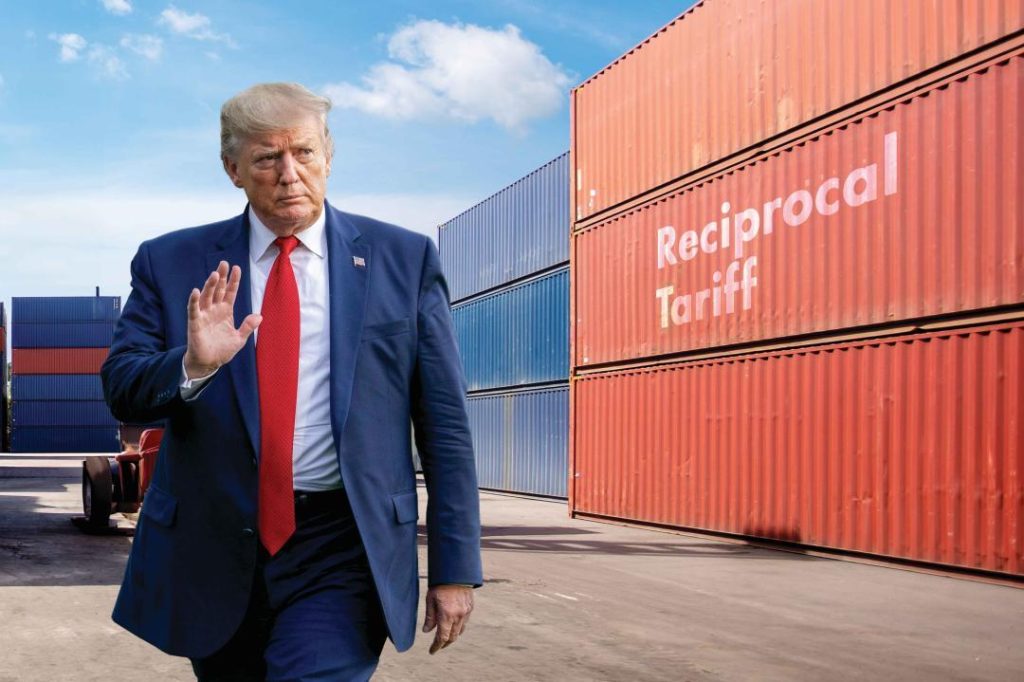
The Great Tariff War: Disruption, Diplomacy, & the Future of Trade
The world is witnessing a significant shift in the global trade landscape, marked by a surge in tariffs and trade tensions between major economies. The latest development is the announcement of new tariffs by the US on certain Chinese goods, escalating the ongoing trade war between the two nations. Meanwhile, India is emerging as an attractive alternative to China, capitalizing on the disruptions caused by the trade tensions. In this blog post, we will delve into the implications of the tariff war, its impact on global supply chains, and the opportunities it presents for India to strengthen its position as a global manufacturing and logistics hub.
Background: The Tariff War
The tariff war between the US and China began in 2018 when the Trump administration imposed tariffs on $34 billion worth of Chinese goods, citing concerns over intellectual property theft and forced technology transfers. China retaliated by imposing tariffs on $34 billion worth of US goods. Since then, both countries have continued to escalate their tariffs, with the US imposing tariffs on over $250 billion worth of Chinese goods and China imposing tariffs on over $110 billion worth of US goods.
The latest development is the announcement of new tariffs by the US on certain Chinese goods, including smartwatches, headphones, and laptops, which will take effect on September 1. This move is a response to China’s failure to meet the US’s demands for trade reforms and intellectual property protection.
Impact on Global Supply Chains
The tariff war has had a significant impact on global supply chains, particularly in industries such as technology, manufacturing, and logistics. Companies are facing higher costs due to tariffs, which are being passed on to consumers. This has led to a surge in production costs, forcing companies to rethink their supply chain strategies.
For instance, Apple has announced that it will increase the prices of its iPhones in the US due to the impact of tariffs on its manufacturing costs. Similarly, Intel has warned that the tariffs will increase its costs and could lead to job losses.
The tariff war has also led to a shift in global supply chains, with companies looking for alternative sources of supply. India, in particular, is emerging as an attractive alternative to China, thanks to its strategic location, skilled workforce, and business-friendly policies.
India’s Opportunity
India has been a key beneficiary of the trade tensions between the US and China. The country has been rapidly advancing its manufacturing capabilities, with a focus on creating a business-friendly environment. The government has introduced policies such as the Make in India initiative, which aims to attract foreign investment and promote domestic manufacturing.
India’s strategic location, bordering China, makes it an attractive alternative for companies looking to diversify their supply chains. The country has a large skilled workforce, with a strong presence of industries such as IT, pharmaceuticals, and textiles.
The tariff war has also led to a surge in demand for Indian goods, particularly in industries such as electronics and machinery. According to industry experts, India is well-positioned to capitalize on the opportunities presented by the tariff war, with the potential to become a major hub for global manufacturing and logistics.
Diplomacy and Trade Agreements
The tariff war has also led to a renewed focus on diplomacy and trade agreements. The US and China are engaged in ongoing trade negotiations, which aim to reach a bilateral trade agreement targeting a $500 billion trade goal by 2030.
India is also engaging in trade negotiations with the US, with a focus on reducing tariffs and increasing trade flows. The country has been pushing for a comprehensive trade agreement with the US, which would provide greater market access and reduce trade barriers.
The tariff war has also led to a surge in regional trade agreements, with countries such as the US, China, and India engaging in negotiations to reduce tariffs and increase trade flows. The Regional Comprehensive Economic Partnership (RCEP) is a key example, which aims to create a free trade area among 16 countries in the Asia-Pacific region.
Future of Trade
The tariff war has disrupted the global trade landscape, but it has also presented opportunities for countries such as India to strengthen their position as global manufacturing and logistics hubs. The future of trade will be shaped by the outcome of ongoing trade negotiations and the emergence of new trade agreements.
In conclusion, the tariff war between the US and China has significant implications for global supply chains and trade flows. India is emerging as an attractive alternative to China, capitalizing on the disruptions caused by the trade tensions. The country has a unique opportunity to strengthen its position as a global manufacturing and logistics hub, with a focus on creating a business-friendly environment and promoting domestic manufacturing.
As the world navigates the complexities of the tariff war, it is essential to engage in diplomacy and trade agreements to promote greater cooperation and trade flows. The future of trade will be shaped by the outcome of ongoing trade negotiations and the emergence of new trade agreements. India’s emergence as a key player in the global trade landscape is a significant development, with the potential to create new economic opportunities and drive growth.
Source:
https://www.logisticsoutlook.com/supply-chain/the-great-trump-tariff-war






